The right to be forgotten allows individuals to request the removal of personal information from search engine results or digital platforms when its dissemination affects their privacy or reputation. The Court of Justice of the European Union first recognized this right in 2014, and the General Data Protection Regulation (GDPR) governs its application.
Tabla de contenidos
When someone publishes intimate content without consent, this right becomes crucial. The exposure of such material can cause irreparable harm to the victim’s personal and professional life, leading to emotional distress and reputational damage.
What is the right to be forgotten?
The right to be forgotten allows individuals to request the removal of personal information from search engine results or digital platforms when its dissemination affects their privacy or reputation. The Court of Justice of the European Union first recognized this right in 2014, and the General Data Protection Regulation (GDPR) governs its application.
When it comes to intimate content published without consent, this right is especially important, as its dissemination can cause irreparable harm to the victim’s personal and professional life.
When can individuals exercise the right to be forgotten?
People can invoke the right to be forgotten in various situations to remove content from the internet, including:
- The publication of intimate images or videos without consent.
- The dissemination of sensitive personal data without authorization.
- Information that has lost relevance and negatively impacts a person’s reputation.
- Content that constitutes harassment or defamation.
However, search engines and platforms do not automatically grant every removal request. Administrators must evaluate each case before deciding whether to take down the content.

How to request the removal of intimate content?
Steps to request the removal of intimate content from the internet:
1. Identify the source of the content
Before submitting a removal request, first identify where the content is hosted.
- Websites or forums.
- Social media platforms.
- Search engines like Google.
- Adult content platforms.
2. Contact the website administrator
Start by reaching out to the administrator of the website or social media platform where someone published the content. Most platforms provide mechanisms for reporting unauthorized posts. Most platforms have mechanisms for reporting unauthorized posts.
3. Request removal from search engines
If the content remains online, submit a removal request to search engines like Google. Google provides a content removal form where individuals can present evidence of the harm caused. Google provides a content removal form where individuals can submit proof of the harm caused.
4. Report the content on social media
Major social media platforms such as Facebook, Instagram, X (Twitter), and TikTok offer options for reporting content that violates privacy. Major social media platforms, including Facebook, Instagram, X (Twitter), and TikTok, allow users to report content that violates privacy. In most cases, the platform reviews complaints and removes content that breaches its policies.
5. Contact data protection authorities
If previous requests do not lead to the removal of the content, individuals can file a complaint with data protection agencies such as the Spanish Data Protection Agency (AEPD) or its equivalent in other EU countries. These institutions can intervene and demand the removal of the content.
6. Take legal action
In serious cases, such as the dissemination of intimate content without consent (commonly known as “revenge porn”), consulting a lawyer specializing in digital law is advisable. Legal action can be taken against those responsible.

Tips to protect your privacy online
Preventing the unauthorized distribution of intimate content is key to protecting online privacy. Some preventive measures include:
- Properly configuring privacy settings on social media to control who can view posts.
- Avoid sharing sensitive content via digital means, especially with individuals who are not fully trusted.
- Regularly monitoring personal information online using search tools and Google alerts.
- Using professional reputation management services to remove or minimize the impact of unwanted content.
Conclusion
The right to be forgotten is a powerful legal tool to remove intimate content from the internet and protecting digital reputation. Although the process can be complex, there are various ways to request the removal of unwanted information, from contacting website administrators to seeking legal or regulatory intervention.
If you need professional assistance in managing the removal of intimate content from the internet, RepScan can help you protect your privacy and regain control over your digital information.
Photos, videos, negative reviews, or fake news can impact your image. We help you remove or deindex them. Leave your details and we’ll contact you.
Photos, videos, negative reviews, or fake news can impact your image. We help you remove or deindex them. Leave your details and we’ll contact you.








